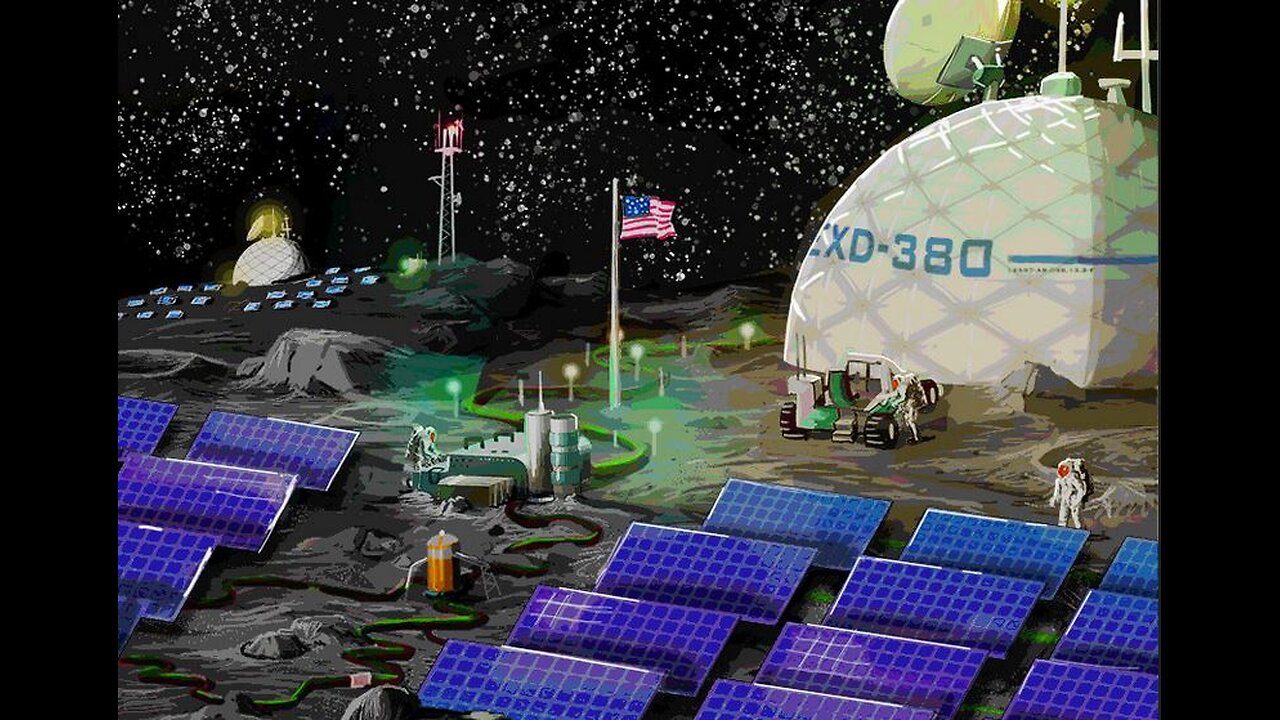Premium Only Content

Why the U.S. Wants a Nuclear Reactor on the Moon: Smart Cities, Crypto & Control
Welcome to a deep dive into the future — where Smart Cities, crypto, and even nuclear reactors on the Moon are no longer science fiction. In today’s video, we explore the bold new plans shaping our world, both here on Earth and far beyond.
What are Smart Cities, and why are governments across the globe pouring billions into building them? These digitally connected urban environments promise efficiency, sustainability, and convenience — but at what cost? Could they also open the door to unprecedented surveillance and centralized control?
Next, we examine 15-Minute Cities, an urban planning concept hailed as eco-friendly and efficient. The idea is simple: everything you need — work, school, shopping, healthcare — within a 15-minute walk. But critics argue it's a step toward digital zoning, restricted mobility, and social scoring systems.
Now imagine this concept expanding beyond Earth. The U.S. government, via NASA and the Department of Energy, is actively planning to place a nuclear reactor on the Moon by the end of the decade. This is part of Project Artemis — a mission to establish a long-term human presence on the lunar surface.
Why a nuclear reactor on the Moon? Simple: power. A reliable energy source is critical for sustaining human life and research bases in space. But the implications are huge — from space colonization to military strategy and energy monopolies beyond Earth.
Meanwhile, Earth’s economy is shifting under the pressures of shrinkflation and centralized banking policies. As prices rise and products shrink, citizens are losing purchasing power. Is this economic “boiling frog” strategy part of the transition toward a more controlled digital economy?
Enter crypto and blockchain technology — decentralized tools that challenge traditional power structures. Could crypto be the antidote to centralized control in both Smart Cities and future space economies? Or is it being co-opted into the very systems it was meant to resist?
In this video, we unpack how crypto’s decentralized promise may either empower individuals or be absorbed by governments in the form of CBDCs (Central Bank Digital Currencies) — programmable money with the power to restrict, surveil, or even expire.
We also explore the possibility of a multi-planetary financial system, where crypto could play a crucial role in interplanetary transactions, digital identity, and data sovereignty. If Smart Cities are nodes in the global network, what happens when we add lunar cities to that equation?
This isn’t just about technology — it’s about freedom, control, and the future of human life. We’re witnessing a convergence of powerful forces: urban AI, space infrastructure, global finance, and digital identity. And you deserve to know how they connect.
If you’ve ever asked questions like:
What is the real agenda behind Smart Cities?
Why does the U.S. want nuclear energy on the Moon?
Can crypto truly free us in a digitally surveilled world?
Then this video is for you.
🔔 Don’t forget to like, subscribe, and share if you find this content valuable. Drop your thoughts in the comments — we want to hear your take on Smart Cities, crypto, and the coming space race.
-
 58:39
58:39
Unknown Truth
3 months agoXRP Price Prediction 2025 — Will Ripple Beat the U.S. Dollar? | National Dollar Day Special
2002 -
 LIVE
LIVE
Grant Stinchfield
18 hours agoABC SETUP: Michael McCaul Falls for Martha Raddatz Trap on Live TV!
176 watching -
 2:00:33
2:00:33
Nikko Ortiz
2 hours agoWorst Military Events And War Crimes... | Rumble LIVE
5.97K1 -
 17:27
17:27
We Got Receipts
2 hours agoAntifa Getting Arrested In The Funniest Ways!
5.28K8 -
 LIVE
LIVE
Caleb Hammer
11 hours agoHe Treats His Wife Like A Dog | Financial Audit
256 watching -
 1:55:16
1:55:16
Badlands Media
5 hours agoBadlands Daily Nov. 24, 2025
24.5K10 -
 2:12:17
2:12:17
Matt Kohrs
13 hours agoStock Market Open, Breaking News & The Week Ahead || Live Trading $1M
20.7K1 -
 2:59:14
2:59:14
Wendy Bell Radio
7 hours agoWhy Do Democrats Put America Last?
56.8K93 -
 1:36:29
1:36:29
Graham Allen
3 hours agoIs The MAGA Divorce Real Or Did Elon Just Expose It’s FAKE?!
125K602 -
 1:13:15
1:13:15
The Big Mig™
4 hours agoTrump, We Must Focus All Our Energy & Might On Election Fraud
2.33K11